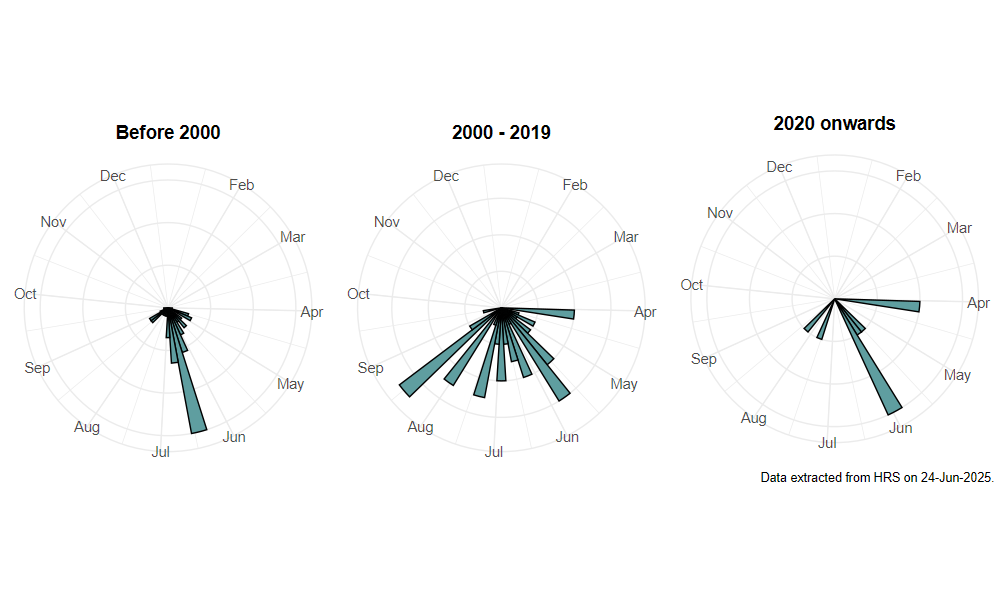Eupeodes nielseni (Dušek & Láska, 1976)
Identification
Identification difficulty = 4. ![]()
![]() according to Ball & Morris, 20241
according to Ball & Morris, 20241
Synonymy
Metasyrphus nielseni Dusek & Laska in Stubbs & Falk (1983)2.
Biology
The larva is predaceous upon aphids and adelgids on Larch Larix and Scots Pine Pinus sylvestris. Adults are flower visitors. The main centre of population in Scotland seems to have been Caledonian pinewoods, but today that link is much weaker as E. nielseni now occurs in a wide range of conifer woodlands.
Flight period
The following plots show the number of unique records per week excluding those reported to be of immature stages.

Status
Lower risk (Nationally scarce) - Ball & Morris, 20143. Notable - Falk, 19914.
Distribution
There are two very distinct populations, one in the Scottish Highlands; the other in Dorset. There are also scattered records across England, Wales and Southern Scotland that suggest that this species is more widely distributed than current data suggest.

Trends
The following plots show the Frescalo TFactor vs year and a map of the rescaled frequency (all records) for the species.
-
Ball, S., & Morris, R. (2024). Hoverflies of Britain and Ireland. WILDGuides (3rd ed.). Oxford: Princeton University Press. ↩
-
Stubbs, A., & Falk, S. (1983). British Hoverflies: An Illustrated Identification Guide (1st ed.). Reading: BENHS. ↩
-
Ball, S., & Morris, R. (2014). A review of the scarce and threatened flies of Great Britain. Part 6: Syrphidae. ( No. 9). Species status (pp. 1–130). Peterborough: JNCC. ↩
-
Falk, S. (1991). A review of the scarce and threatened flies of Great Britain. ( No. 39). Research and Survey in Nature Conservation (pp. 1–194). Peterborough: NCC. ↩